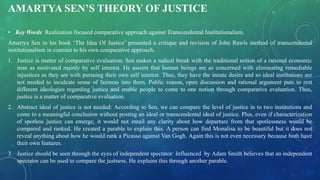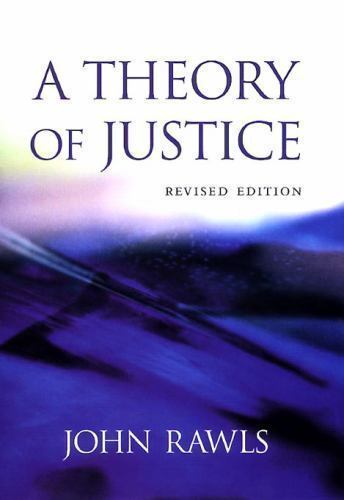A Theory of Justice is a book written by philosopher John Rawls that was published in 1971. It is considered one of the most important works in political philosophy in the 20th century and has had a significant influence on the development of political and legal thought.
At the heart of Rawls' theory is the concept of justice as fairness. Rawls argues that justice is not about the distribution of goods or resources, but rather about the way in which those goods and resources are distributed. He asserts that a just society is one in which the distribution of goods and resources is based on a principle of fairness, rather than on arbitrary factors such as wealth, power, or social status.
Rawls' theory is based on the idea of the social contract, which is the hypothetical agreement that individuals in a society make with one another in order to establish the rules and principles that govern their relationships. Rawls' social contract is based on the concept of the "original position," which is a hypothetical situation in which individuals are asked to choose the principles of justice that should govern their society.
According to Rawls, individuals in the original position are assumed to be rational and self-interested, and they are asked to choose the principles of justice that would be in their own best interest, given their particular circumstances and needs. Rawls argues that, in the original position, individuals would choose principles of justice that are fair and that would benefit the least advantaged members of society, because they realize that they could be in the least advantaged position themselves.
Rawls' theory of justice has two main principles: the principle of equal liberty and the principle of fair equality of opportunity. The principle of equal liberty holds that all individuals should have the same basic liberties and rights, such as freedom of speech and religion, and that these liberties should not be infringed upon by the state or by other individuals. The principle of fair equality of opportunity holds that all individuals should have an equal chance to pursue their goals and ambitions, regardless of their social status or background.
Rawls' theory of justice has been widely debated and has had a significant impact on political and legal thought. It has been particularly influential in discussions of distributive justice and the role of the state in promoting fairness and equality. Despite its widespread influence, Rawls' theory has also been the subject of criticism, with some arguing that it is too abstract and unrealistic to be applied in practical terms.
Overall, A Theory of Justice is an important work that has had a significant influence on the development of political and legal thought. It offers a compelling vision of justice as fairness and provides a framework for thinking about the principles that should govern society.
A Theory of Justice

For this reason, he listed it first, and it is most important because it is the foundation for the rest of his beliefs. Against the Marxists, Rawls asserts that liberalism is not simply a defense of liberty that leads to gross inequality. They don't know your ethnicity, your gender, or your age, either. Additionally, the original position is formulated to be a point of view that will lead to the same conclusion of principles no matter by whom it is adopted, where they live, or in what era they live. GradeSaver, 21 January 2019 Web. Read also Jesus Did Not Come To Abolish The Law The theory of justice is important because it helps us to think about how we can create a fairer society. The second principle of social justice is that each person should have access to what they need.
A Theory of Justice Part 1 Chapter 3 Summary

However, what is apparent is that the basic institutions he speaks about as a necessity for arranging distributive shares in a just sense may work vastly differently in different societies. Part a of the second principle is referred to as the difference principle while part b is referred to as the equal opportunity principle. It will lay out some personal information on John Rawls. An individual goes through the process of socialization, through the approval and disapproval of authority figures, from parents to teachers and peers. There is no room for idle observation, meaning, that while we all possess equal opportunity as we all are equally moral persons, the choice of what you wish to possess materially as well as intellectually is the discretion and capability of the individual. In his publication, John Rawls introduces the eminent Original Position, in which everyone is impartially situated as equal, and the Principles of Justice, directed at undertaking the competing claims for liberty and fairness in the present-day society.
A Theory of Justice Chapter Summaries

This representative does not know about your social or economic position, such as your income, age, gender or ethnicity. This meeting is not a literal election or vote like in our example earlier about the tax structure. Firstly, it arises when persons lack a sure confidence in their own value and in their ability to do anything worthwhile. Social and economic inequalities are to be arranged so that they are both: Read also Is Hoarding Against The Law a to the greatest benefit of the least advantaged members of society, and b attached to offices and positions open to all under conditions of fair equality of opportunity. In addition, as free and rational beings, they will seek to implement the idea of reciprocity that is ingrained in the well-ordered society by furthering two principles of justice. He defines a happy person as one who is on the way to a successful execution of a rational plan of life drawn up under favorable conditions and who is reasonably confident that their intentions can be carried out.






